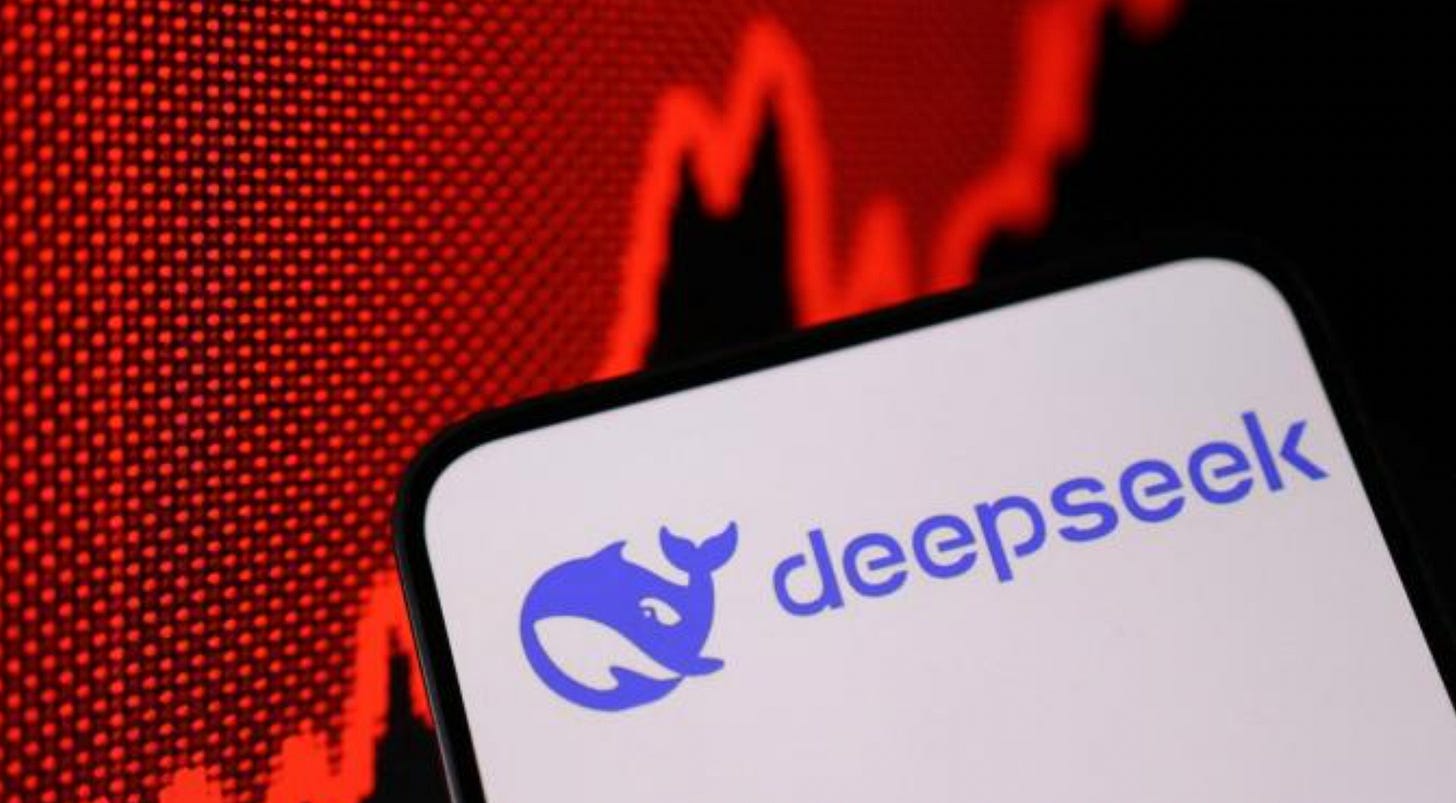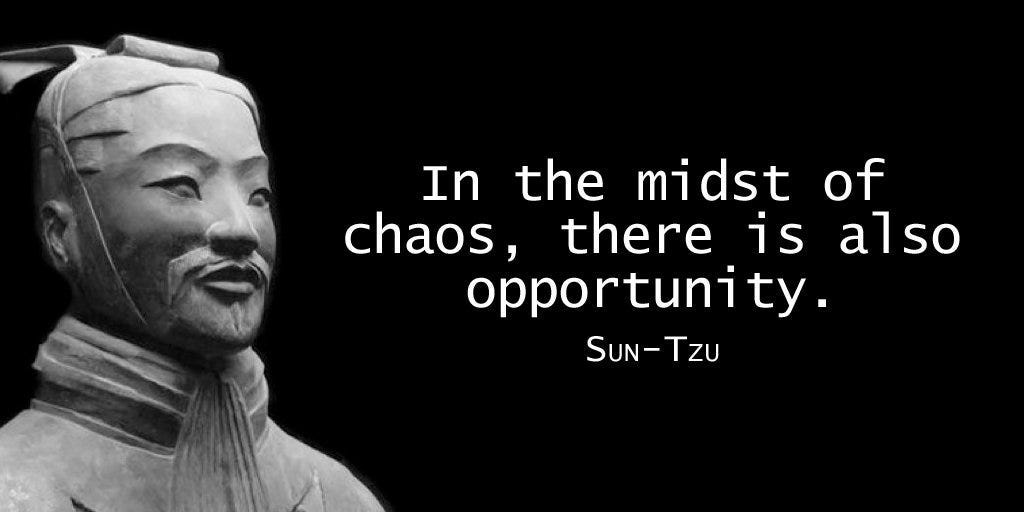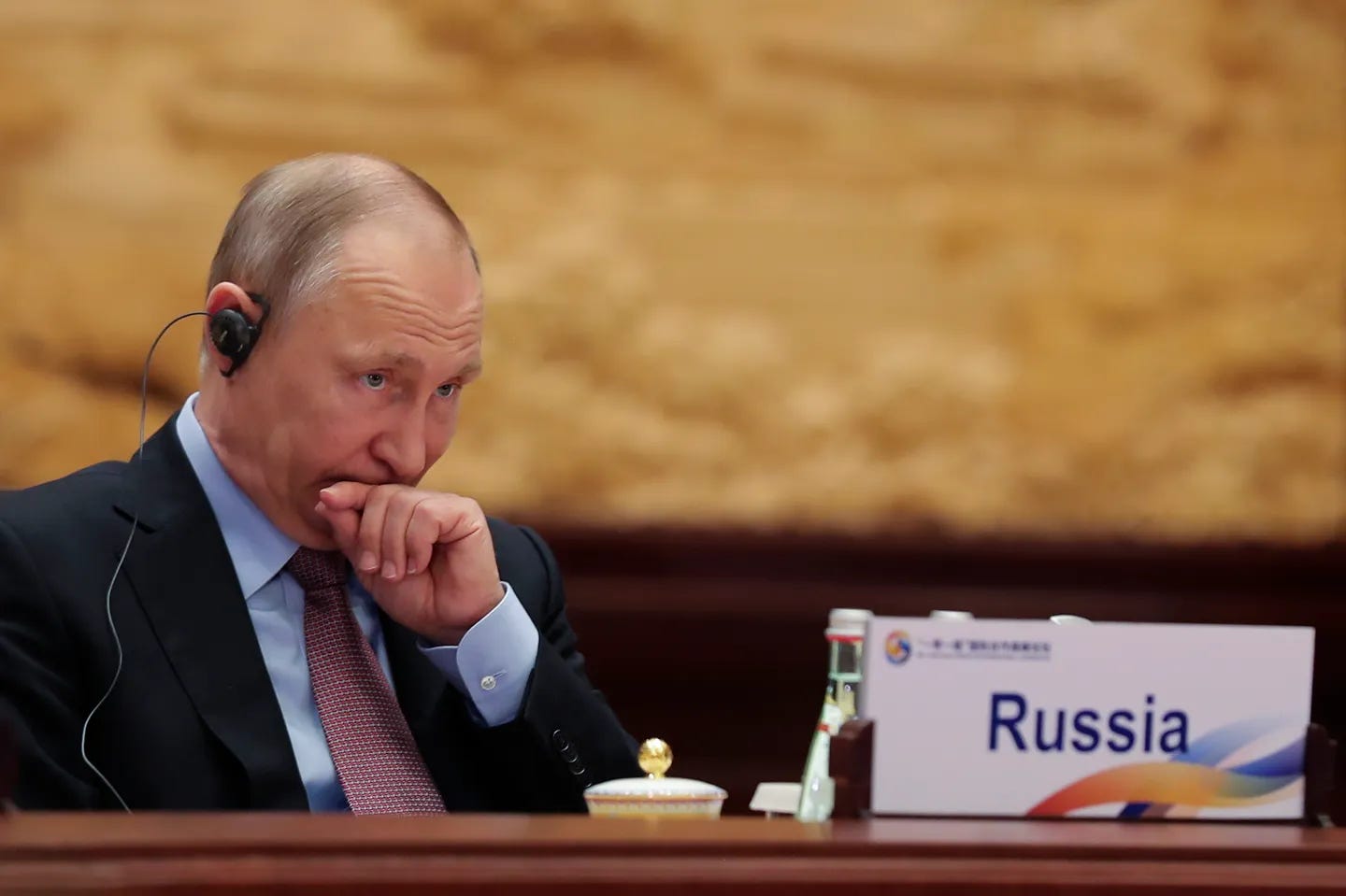The AI Revolution’s Tectonic Shift: How DeepSeek Rewrote the Rules of Power, Profit, and Progress

DeepSeek-R1, released last week, is 20–50 times cheaper to use than OpenAI’s O1 model.
Opinion – Editorial
In October 1957, the launch of Sputnik 1 shattered America’s illusion of technological invincibility. Today, another shockwave has erupted, not from space, but from code. A Chinese AI model, DeepSeek, reportedly developed with a direct training cost of $5.6 million, has dethroned ChatGPT from the top of the U.S. app store and triggered a $600 billion plunge in NVIDIA’s valuation. More than just a disruptive innovation, this marks a tectonic rupture in the AI landscape, exposing the fragility of Western assumptions about money, might, and monopoly.
“DeepSeek R1 is AI’s Sputnik Moment,” declared Marc Andreessen. But unlike the Cold War’s orbital rivalry, this battle is fought in algorithms, market valuations, and ideological frameworks. The stakes? Control over the 21st century’s most transformative force.

I. David vs. Goliath: The $500 Billion Paradox
When Efficiency Eclipses Extravagance
In early 2025, the U.S. unveiled the Stargate Project, a $500 billion behemoth backed by OpenAI, SoftBank, and Oracle, intended to brute-force America’s path to artificial general intelligence (AGI) through sheer computational mass. Yet, while Stargate’s architects pursued “scale as strategy,” an unassuming challenger emerged.
DeepSeek R1, developed for $5.6 million (around 0.001% of Stargate’s budget) matched or surpassed GPT-4’s performance while consuming 95% less energy. This divergence encapsulates a paradigm shift:
-
Stargate’s Gambit: Betting on NVIDIA GPUs, hyper-scale data centres, and AGI via astronomical spending.
-
DeepSeek’s Gambit: Leveraging algorithmic ingenuity to bypass hardware bottlenecks.
The result? A market convulsion. NVIDIA, the linchpin of Western AI hardware, lost nearly $600 billion in market value in a single day, marking the biggest drop for any U.S. company in history. Microsoft and Meta shed $180 billion collectively. Investors grasped an existential risk: What if the road to AGI isn’t paved with gold, but with code optimisations?

II. The Great Unraveling: AI’s Cost Illusion Exposed
From Billion-Dollar Bets to Frugal Genius
For years, Silicon Valley assumed that AI supremacy demanded exponential spending. GPT-4’s training cost, often cited in the $75–100 million range, was considered a baseline, and many believed that AGI might require investments into the billions. DeepSeek’s $5.6 million figure shattered this orthodoxy. However, DeepSeek’s technical paper clarifies that this number only covers the final training phase and excludes prior research, architecture experiments, and data processing. The true cost, then, is higher but still represents a fraction of Western spending.

The age-old adage, “necessity is the mother of invention,” remains relevant in today’s rapidly evolving technological landscape, yet innovation is not solely driven by constraints. While limitations can ignite creative problem-solving, history shows that true paradigm shifts, such as quantum computing and advanced AI, often emerge where necessity intersects with ample resources and a bold vision.
Constraints, however, do not merely hinder progress; they can catalyse it. In fields like design, storytelling, and artificial intelligence, resource limitations often compel individuals and organisations to develop leaner, more efficient, and more imaginative solutions. The rise of DeepSeek exemplifies this principle: faced with restricted access to Western AI chips and technology due to sanctions, Chinese engineers were forced to optimise their models, achieving high-performance AI at significantly lower computational costs. As Sun Tzu observed, “In the midst of chaos, there is also opportunity.”

Constraints in Practice: The Case of Abkhazia
Interestingly, the concept of constraints driving innovation is not limited to superpowers or the technology sector. One such example is Abkhazia, a region with limited international recognition that has faced severe sanctions. Following the Georgian-Abkhazian war in the 1990s, the region was subjected to an economic blockade led by Russia and Georgia under the Commonwealth of Independent States (CIS). Although Russia recognised Abkhazia’s independence in 2008, the country continues to live under international isolation.
The embargo and isolation imposed immediately after the war did not alter Abkhazia’s outlook. On the contrary, it reinforced their commitment to independence. Today, the isolation imposed by the Western world, led by Georgia, similarly fails to change Abkhazia’s stance on sovereignty; if anything, it fortifies it. Meanwhile, the West criticises Abkhazia’s close ties with Russia, yet its isolation policy paradoxically pushes Abkhazia even closer to Moscow.

Despite these constraints, Abkhazia has demonstrated significant self-reliance and resilience, whether in navigating agricultural trade, protecting its forests, or preserving endemic species and water resources. For example, despite rumours of rampant deforestation, satellite imaging reveals only minimal tree-cover loss in the region. In reality, Abkhazia’s isolation has actually led to stringent local environmental measures, as unchecked logging could risk soil erosion, landslides, and irreversible damage to critical habitats.
Yet these same constraints also limit Abkhazia’s access to international cooperation, technology, and financial resources, undermining potential infrastructure upgrades or environmental protection programmes. Its over-reliance on the Ingur hydropower plant, for instance, leaves Abkhazia vulnerable to Georgia’s upstream projects, with no recognised platform to negotiate water usage. The region’s exclusion from transnational initiatives, like coastal protection schemes or cross-border efforts to combat forest fires, underscores how isolation can stifle larger-scale development even as it spurs local ingenuity.
Abkhazia is far from being a player in the AI field, but it exemplifies how isolation, whether imposed by sanctions or geography, can incentivise both resilience and creativity. In much the same way DeepSeek emerged from the crucible of U.S. chip sanctions in China, smaller, partially recognised territories sometimes forge unique paths under pressure. Yet while Abkhazia’s example illustrates how isolation can spur resilience, it’s time to return to the main AI stage, where scepticism lingers over DeepSeek itself.
Reports suggest that DeepSeek may have utilised distillation, training a smaller AI model using outputs from a more advanced system. If DeepSeek indeed leveraged OpenAI’s ChatGPT, despite explicit prohibitions on training competing models, it raises pressing ethical and legal questions about the lab’s true independence.
III. Geopolitical Tremors: The Dragon’s Ascent
From Silicon Valley to Shenzhen: Redrawing the Tech Map
DeepSeek’s rise is not just a technical achievement; it’s geopolitical dynamite. For decades, the U.S. wielded technological superiority as a cudgel, enforcing dominance through sanctions and semiconductor monopolies. DeepSeek’s emergence signals a seismic shift in that balance.
Adding to the tension, Russian President Vladimir Putin recently reignited debate over AI’s strategic significance. Speaking to students, he warned:
“Artificial intelligence is the future, not only for Russia, but for all humankind… Whoever becomes the leader in this sphere will become the ruler of the world.”

Putin’s stance underscores the mounting global competition: while China and the U.S. remain AI’s main frontrunners, Russia’s ambition highlights a broader trend, nations increasingly view AI as a linchpin of both economic and military might.
-
Market Shockwaves: NVIDIA’s ~16% stock plunge (shedding $600 billion in market value) mirrors a broader crisis in Western tech hegemony.
-
Strategic Reckoning: The Pentagon’s AI Dominance Report and Putin’s recent statement converge on a single point: “Whoever leads in AI will rule the world.”
-
Soft Power Play: China positions itself as a champion of AI democratisation, providing open-source tools, contrasting Western proprietary models and sparking new anxieties in Washington and beyond.
However, questions remain about DeepSeek’s true independence. Given China’s state-driven economic model, could hidden government subsidies or illicit access to Western intellectual property have boosted DeepSeek’s “efficiency” claims? The deeper the scrutiny, the murkier the story becomes.
One thing is clear: as major world powers, China, the U.S., and now Russia, escalate their focus on AI, the competition transcends mere technological prowess. It becomes a race to secure the very foundations of 21st-century global influence.
IV. Ideological Crossroads: Open-Source vs. The Walled Gardens
The Code Wars: Collaboration vs. Control
At the heart of this upheaval lies a philosophical clash:
-
West: Preaches digital freedom but often locks AI advancements behind corporate paywalls.
-
East: Embraces open-source pragmatism, making AI accessible to startups, governments, and individual developers.
This dichotomy is reshaping global alliances. Developing nations, long priced out of AI, are flocking to DeepSeek’s affordable toolkit. Meanwhile, Europe faces a dilemma: how to foster AI innovation without ceding digital sovereignty to either U.S. or Chinese platforms?
V. The Sanctions Spiral: How America’s Weapon Backfired
The Cobra Effect in the Tech Cold War
Economists speak of the Cobra Effect, when a policy causes unintended harm. U.S. tech sanctions against China illustrate this perfectly:
-
Innovation Acceleration: Denied NVIDIA’s top-tier A100 or H100 chips, Chinese labs repurposed legacy hardware and optimised energy consumption, fast-tracking breakthroughs.
-
Supply Chain Decoupling: Huawei’s post-sanctions resilience highlights China’s push for self-reliance across all advanced tech sectors.
-
Global Market Fractures: India and Saudi Arabia hedge their bets, reflecting a splintering AI landscape no longer dominated by one or two Western giants.
As some argue, “The U.S. has effectively handed China a blueprint for technological autarky. Every restriction is a challenge to innovate, and China loves challenges.” In other words, each new barrier has only spurred fresh thinking inside Chinese AI labs, underscoring how constraints can sometimes become a catalyst for unexpected leaps in technology.
VI. Future Scenarios: AGI, Autonomy, and Anarchy
The Horizon of Possibility
As the AI race accelerates, several plausible futures emerge:
-
The Efficiency Era: DeepSeek’s model sparks a global pivot to leaner AI, bankrupting firms reliant on brute-force scaling.
-
Hybrid Horizons: Western giants merge Stargate’s colossal resources with DeepSeek’s algorithmic efficiency.
-
AGI Wildfire: Open-source models inadvertently catalyse uncontrolled AGI, triggering global governance crises.
-
Bipolar Tech Order: A fragmented world splits into a U.S.-led proprietary sphere and a China-led open-source sphere.
Each scenario carries existential risks. Agentic AI, autonomous systems steering everything from logistics to law, could create trillion-dollar markets or wipe out entire professions.

Epilogue: The New Rules of the Game
The AI revolution has entered its post-Sputnik phase. The old axioms, bigger budgets, proprietary control, hardware supremacy, lie in ruins. In their place, a new calculus emerges:
-
Ingenuity > Capital: A ‘$5.6 million’ project can outflank a $500 billion behemoth.
-
Openness > Opacity: Collaboration may eclipse secretive, corporate hoarding.
-
Constraints > Complacency: Scarcity, not surplus, often fuels the greatest breakthroughs.
Yet, amid the euphoria, caution is warranted. DeepSeek’s data sources remain shadowy; its censorship of politically sensitive topics hints at state oversight. Western models carry their own cultural and corporate biases. The AI race isn’t just about technology, it’s a mirror of our deepest ideologies, fears, and aspirations.
As the stakes climb, one truth stands out: The next chapter of this saga will define the future of intelligence itself.